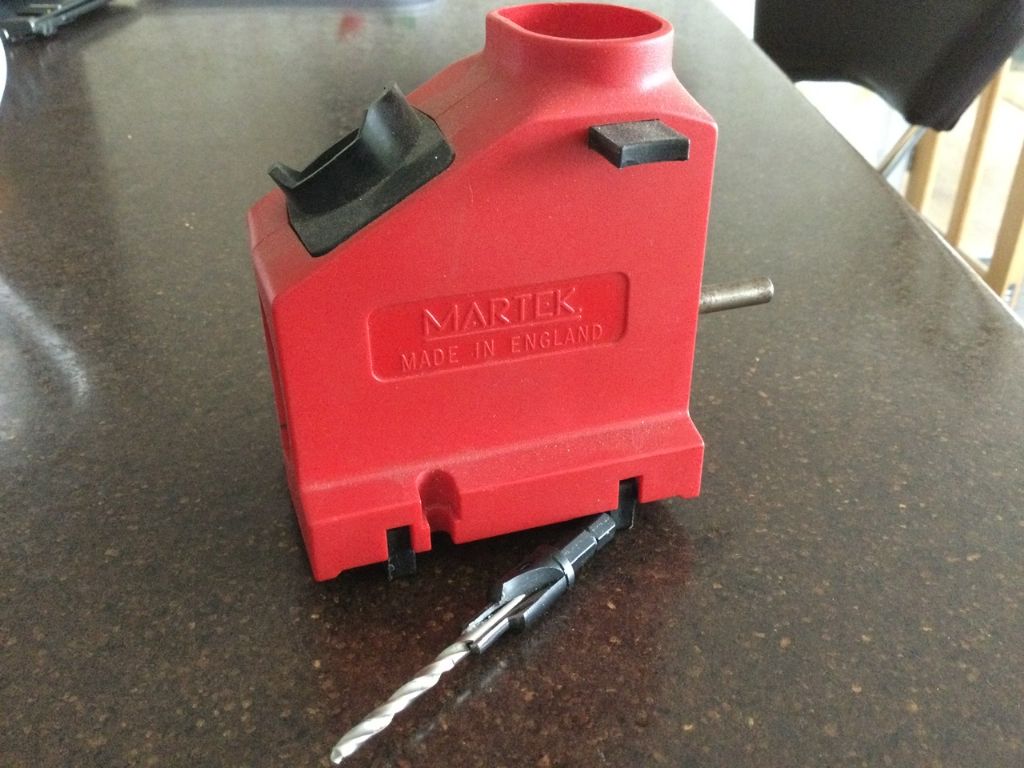Posted by Mike Poole on 25/01/2022 20:17:22:
With a dip tank close by it is no trouble to dip before things get too hot, although HSS should not lose its temper easily I am convinced that the edge of a tool that has been overheated when grinding is not a durable as one that has been kept cool. Tools with thin sections are very easy to overheat and care should be taken to avoid overheating by keeping things cool.
Mike
Me having quoted Sparey as the authority for damage, Andy Stopford made me think when he said 'You won't harm HSS by overheating on a grinder.' Which makes sense because modern HSS (ie made after about 1930), is still hard enough to cut at red heat. (Not a good idea because red hot HSS goes blunt faster than cool HSS.)
Also true it's exceeding difficult to soften HSS by annealing, because accurate temperature control and long soak times are needed.
'Grinder Burn' is an easy way of destroying the hardness of ordinary tool-steel, so maybe Sparey was echoing a recent folk-memory. However, I think not because his book spends a paragraph or two debunking the alleged qualities of carbon-steel lathe tools. In 1950, HSS was new within the lifetime of many machinists, and there were plenty of chaps who preferred the old ways, believing carbon-steel can be ground sharper than HSS, and that it produces a better finish. I think Sparey knew his stuff.
Two other possibilities remain.
- I think Mike is right to worry about the very high temperatures that can be generated in thin sections. Grinding sparks are HSS undergoing a fundamental chemical change due to being hot enough to burn in air. Not unlikely that the composition of the alloy at the edge of an overheated HSS tool is altered.
- And I think Swarf Mostly and Noel are right about micro-cracking, which is mechanical damage invisible to the naked eye.
I suggest overheating and/or rapid quenching can produce a damaged edge and the effect is rapid wear rather than catastrophic failure or poor finish. A HSS edge without micro-cracks and heat damage stays sharp longer that the same item mistreated.
I think rapid wear is impossible to detect in an ordinary workshop and it doesn't matter to us. When HSS tools stop cutting we simply resharpen them, without knowing if the bluntness is premature or not. Far more important in production where getting another 10% out of cutters doing saves big money.
As it's easy to avoid overheating while grinding, I just do it. No harm, it might be worthwhile, but it's probably daft to fret about it.
I'd worry more about grinding wood-working tools though. They might be ordinary tool-steel or a different HSS alloy. As high-temperature cutting is unlikely in wood-working, the HSS alloy used in chisels etc might be optimised for edge-holding and toughness rather than heat-hardness.
I always worry about generalising. Some folk believe there are two sorts of HSS: old British, which is wonderful, and the modern rubbish made in the Far East out of Cheese. If only it were that simple!. At least seven different High Speed Steel alloys are commonly available and their exact properties are often tweaked at the factory by heat-treating to suit particular industrial needs. I've no idea exactly how each of the seven common HSS alloys behaves on a grinding wheel. I don't even know which alloy some of my HSS is made of…
Dave
Edited By SillyOldDuffer on 26/01/2022 11:04:43
Alan Wilkinson 1.





